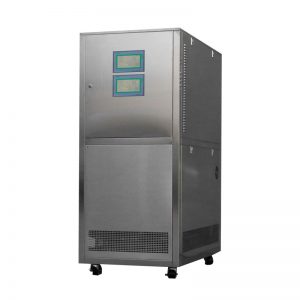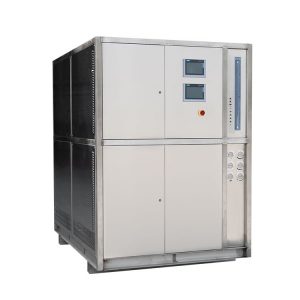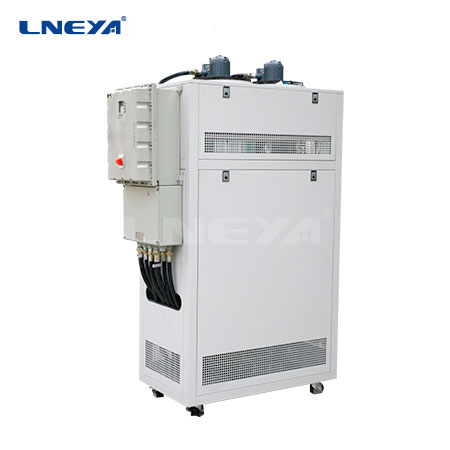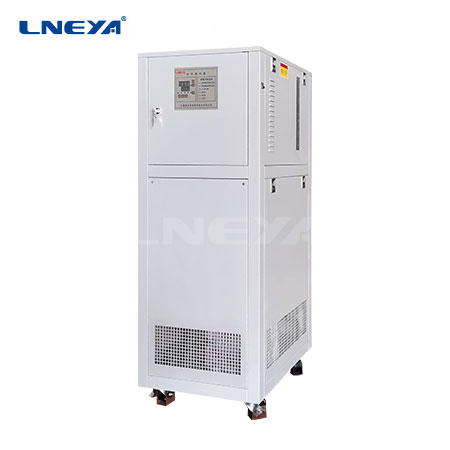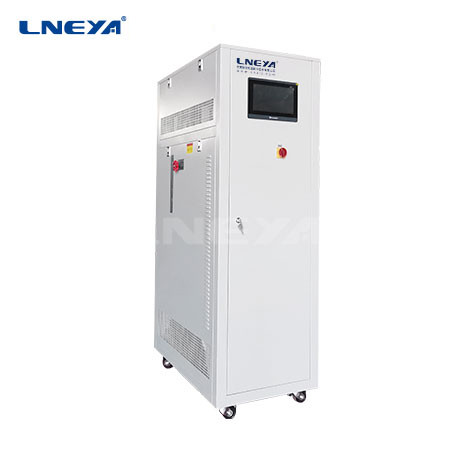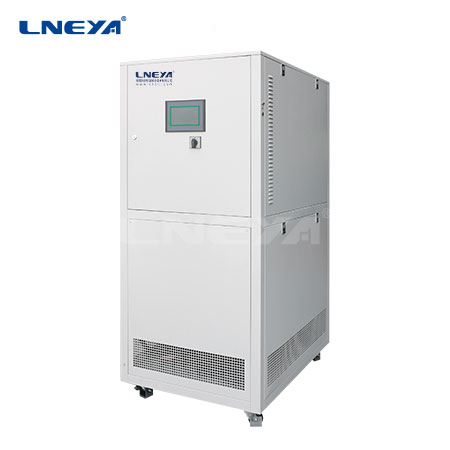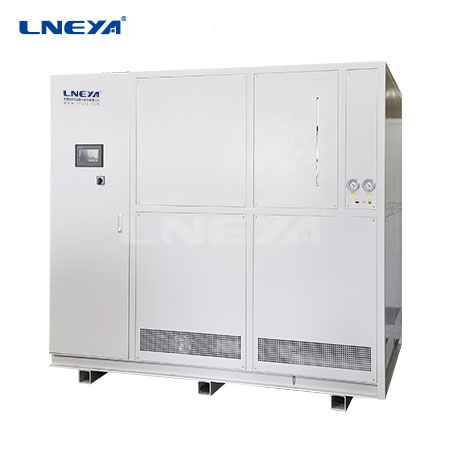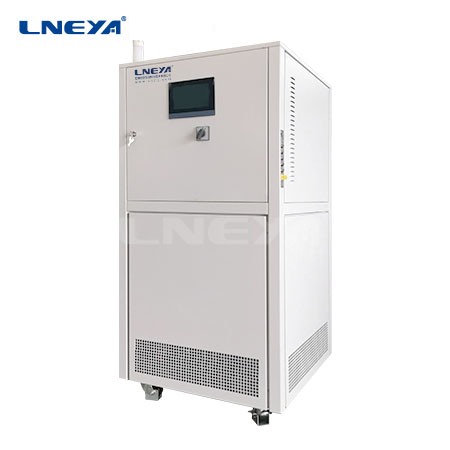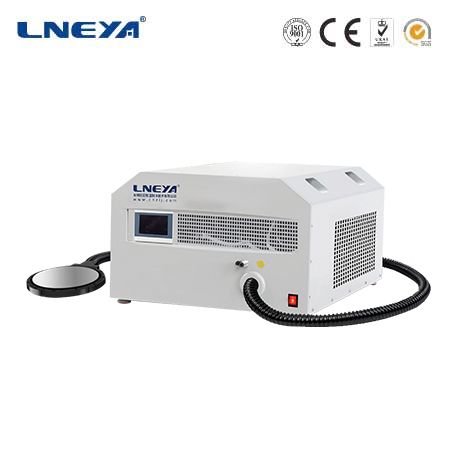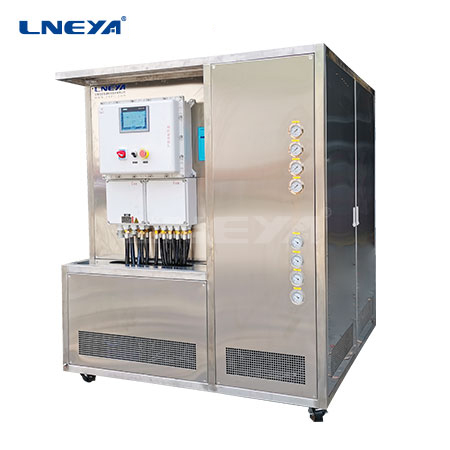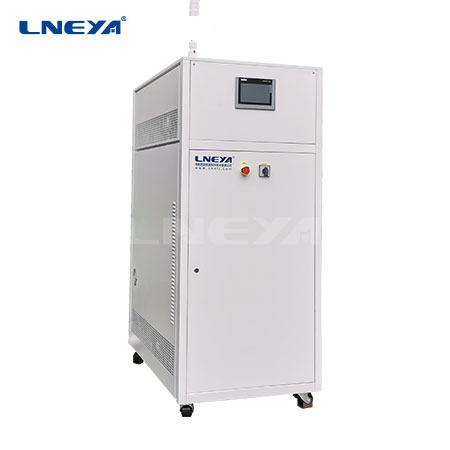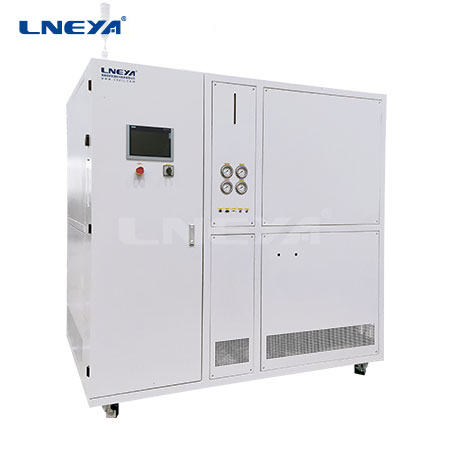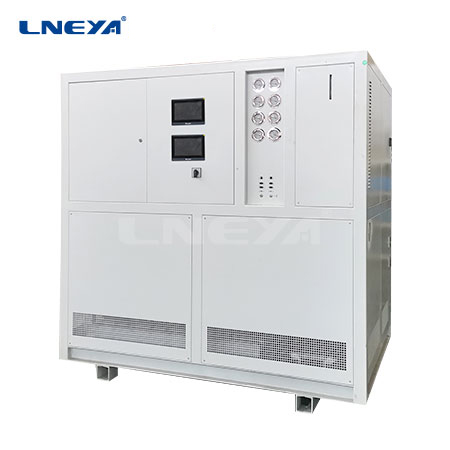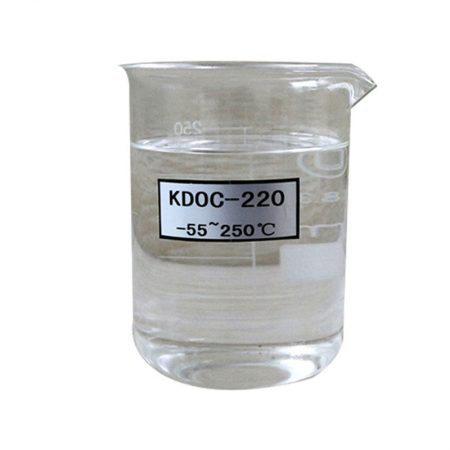20 Ton Air Cooled Chiller
Kontaktieren Sie uns noch heute für die perfekte Lösung zur Temperaturkontrolle
Introduction of 20 ton air cooled chiller
20 ton air cooled chiller is a type of water chiller. It cools normal temperature water to a certain temperature through the compressor of the chiller to strengthen the cooling of the mold or machine. It is used as a stand-alone machine. The heat dissipation device is a built-in fan. There are three main mutual Contact systems: refrigerant circulation system, water circulation system, electrical automatic control system.
Features of 20 ton air cooled chiller:
1. The compressor of the unit adopts a scroll-type fully sealed compressor and electronic control components, and is equipped with a condenser and evaporator made of high-quality copper tubes with high heat exchange efficiency;
2. Equipped with various safety protection devices, with stable performance, low noise, long service life and simple operation. Using LCD display human-machine interface, the operation is simple and convenient, and the operating status is clear at a glance;
3. The models adopt single compressor or multi-compressor combined refrigeration system. The compressors can automatically operate alternately according to load changes, balancing the operating hours of each compressor, thereby saving energy consumption and extending the service life of the chiller. Convenient for energy adjustment and more energy-saving under partial load;
4. The whole machine casing has a box-type structure, with beautiful appearance and compact structure. The operation of the unit can be checked at any time. The unit can be equipped with its own water tank and circulating water pump according to the cooling capacity, without the need for cooling towers and cooling water pumps, and installation and maintenance are simple and convenient.

The basic composition of 20 ton air cooled chiller:
Condenser: In the refrigeration process, the condenser plays the role of outputting heat energy and condensing the refrigerant. After the high-pressure superheated steam discharged from the refrigeration compressor enters the condenser, all the heat absorbed during the working process, including the heat absorbed from the evaporator and refrigeration compressor and in the pipeline, is transferred to the surrounding medium (water or air) taken away. The high-pressure superheated vapor of the refrigerant recondenses into a liquid. (According to different cooling media and cooling methods, condensers can be divided into three categories: water-cooled condensers, air-cooled condensers, and evaporative condensers).
Liquid receiver: The liquid receiver is installed after the condenser and is directly connected to the drain pipe of the condenser. The refrigerant liquid of the condenser should flow into the liquid receiver unobstructed, so that the cooling area of the condenser can be fully utilized. On the other hand, when the heat load of the evaporator changes, the demand for refrigerant liquid also changes. At that time, the liquid receiver plays the role of adjusting and storing refrigerant. For small chiller refrigeration equipment systems, liquid receivers are often not installed, but condensers are used to adjust and store refrigerant.
Drying filter: In the refrigeration cycle of the chiller, moisture and dirt (oil, iron filings, copper filings) must be prevented from entering. The main source of moisture is the trace moisture contained in the newly added refrigerant and lubricating oil, or due to Moisture brought by air entering during system maintenance. If the water in the system is not completely removed, when the refrigerant passes through the throttle valve (thermal expansion valve or capillary tube), the water will sometimes solidify into ice due to the drop in pressure and temperature, blocking the passage and affecting the normal operation of the refrigeration device. Therefore, a filter drier must be installed in the chiller refrigeration system.
Evaporator: The evaporator is a heat exchange device that relies on the evaporation (actually boiling) of the refrigerant liquid to absorb the heat of the cooled medium. Its function in the refrigeration system is to absorb heat (or output cooling capacity). In order to ensure that the evaporation process can proceed stably and lastingly, the evaporated gas must be continuously pumped away by a refrigeration compressor to maintain a certain evaporation pressure.
Thermal expansion valve: The thermal expansion valve is not only a flow regulating valve in the chiller refrigeration system, but also a throttle valve in the refrigeration equipment. It is installed between the drying filter and the evaporator in the refrigeration equipment. Its temperature sensing package It is wrapped at the outlet of the evaporator. Its main function is to throttle and reduce the pressure of high-pressure and normal-temperature refrigerant liquid when flowing through the thermal expansion valve, and turn it into low-temperature and low-pressure refrigerant wet vapor (mostly liquid, a small part is steam) into the evaporator, and vaporizes in the evaporator. Absorb heat to achieve the purpose of cooling.
Refrigerant: Most industrial chillers used in modern industry use R22 or R12 as refrigerant. Refrigerant is the flowing working fluid in the refrigeration system. Its main function is to carry heat and absorb and release heat when its state changes.
E-Mail: info@lneya.com WeChat ID: +8615251628237 WhatsApp: +86 17851209193
 Präzisionskältemaschinen / Kleinkältemaschinen
Präzisionskältemaschinen / Kleinkältemaschinen
Die Kältemaschine kann in verschiedenen Industrien und Labors eingesetzt werden und unterstützt kundenspezifische Designs.
| Temperaturbereich | -18°C ~ +30°C | +5°C ~ +35°C Reihe | |||||||
| Kühlleistung | 0,35 ~ 0,9kW | 1,8 ~ 50kW | |||||||
| Hinweis: Jeder Temperaturbereich von -150℃ ~ +350℃ und jede Kühlleistung kann angepasst werden | |||||||||

Rückkühler
Unser Rückkühler arbeitet mit Niedertemperatur-Kältetechnik, die Temperatur beträgt bis zu -120℃, und verschiedene Zubehörteile sind anpassbar.
| Temperaturbereich | Serie -25°C ~ +30°C | -45°C ~ +30°C Reihe | Serie -60°C ~ -20°C | Serie -80°C ~ -20°C | Serie -120°C ~ -70°C | ||||
| Kühlleistung | 0,8 ~ 30kW | 0,75 ~ 12kW | 0,4 ~ 6kW | 0,2 ~ 6kW | 0,3 ~ 5kW | ||||
| Hinweis: Jeder Temperaturbereich von -150℃ ~ +350℃ und jede Kühlleistung kann angepasst werden | |||||||||

Niedertemperatur-Kühlgeräte
Wir haben uns auf die Herstellung von Niedertemperaturkältemaschinen mit einem Temperaturregelbereich von bis zu -150°C spezialisiert, die den Kühlbedarf verschiedener Branchen decken.
| Temperaturbereich | Serie -25°C ~ -5°C | Serie -45°C ~ -10°C | Serie -60°C ~ -10°C | Serie -80°C ~ -30°C | Serie -110°C ~ -50°C | Serie -150°C ~ -110°C | |||
| Kühlleistung | 12 ~ 360kW | 6 ~ 180kW | 6 ~ 180kW | 4 ~ 180kW | 2 ~ 120kW | 2,5 ~ 11kW | |||
| Hinweis: Jeder Temperaturbereich von -150℃ ~ +350℃ und jede Kühlleistung kann angepasst werden | |||||||||
Temperatursimulation für die Qualitätsprüfung von Fahrzeugen: Prüfung der Batterielebensdauer, Prüfstand für Einspritzdüsen/Motoren, Airbag-Prüfung, Komponentenprüfstand, usw.

Geeignet für die präzise Temperaturkontrolle von elektronischen Bauteilen. Bei der Herstellung von elektronischen Halbleiterkomponenten für raue Umgebungen umfassen die Phasen der IC-Gehäusemontage sowie der Entwicklungs- und Produktionstests auch elektronische Wärmetests und andere Simulationen von Umwelttests.

Flüssigkeitskühlung für Batterie-Energiespeichersysteme
| Typen | Für Converting Station | Für Energiespeicherbatterie | Für die Ladestation | ||||||
| Kühlleistung | 45kW | 5 ~ 8,5kW | 4kW | ||||||
| Hinweis: Jeder Temperaturbereich von -150℃ ~ +350℃ und jede Kühlleistung kann angepasst werden | |||||||||

Baureihe ZLFQ
Kühlmittelverteilereinheit
Flüssigkeitskühlgeräte eignen sich für die Prüfung von Halbleitern, die Prüfung elektronischer Geräte bei konstanter Temperatur, die Kühlung der Serverinfrastruktur und andere Orte, an denen die Temperatur von Flüssigkeiten kontrolliert wird.
| Temperaturbereich | +5°C ~ +35°C | +5°C ~ +35°C | |||||||
| Kühlleistung | 15 ~ 150kW | 200 ~ 500kW | |||||||
| Hinweis: Jeder Temperaturbereich von -150℃ ~ +350℃ und jede Kühlleistung kann angepasst werden | |||||||||

MD-Thermofutter-Serie
Es wird für die Prüfung von HF-Bauteilen und Leistungsbauteilen mit hoher Dichte (IGBTs und MOSFETs) verwendet und kann auch für die schnelle Kühlung von flachen Laborplatten (Plasma, biologische Produkte, Batterien) usw. eingesetzt werden.
| Temperaturbereich | -75°C ~ +225°C | ||||||||
| Temperaturgenauigkeit | ±0.1℃ | ||||||||
| Hinweis: Jeder Temperaturbereich von -150℃ ~ +350℃ und jede Kühlleistung kann angepasst werden | |||||||||

Schraubenkühler (Benutzerdefinierte Designs)
Niedertemperatur-Schraubenkühlmaschinen und Raumtemperatur-Schraubenkühlmaschinen
| Temperaturbereich | +5°C ~ +30°C | +5°C ~ +30°C | +5°C ~ +30°C | +5°C ~ +30°C | -25°C ~ +5°C | -25°C ~ +5°C | |||
| Kühlleistung | 107 ~ 1027kW (Einzelverdichter) | 299 ~ 2134kW (Doppelkompressor) | 98 ~ 934kW (Einzelverdichter) | 272 ~ 1940kW (Doppelkompressor) | 48 ~ 467kW (Einzelverdichter) | 51 ~ 497kW (Einzelverdichter) | |||
| Hinweis: Jeder Temperaturbereich von -150℃ ~ +350℃ und jede Kühlleistung kann angepasst werden | |||||||||
 LNEYA
LNEYA
 简体中文
简体中文










